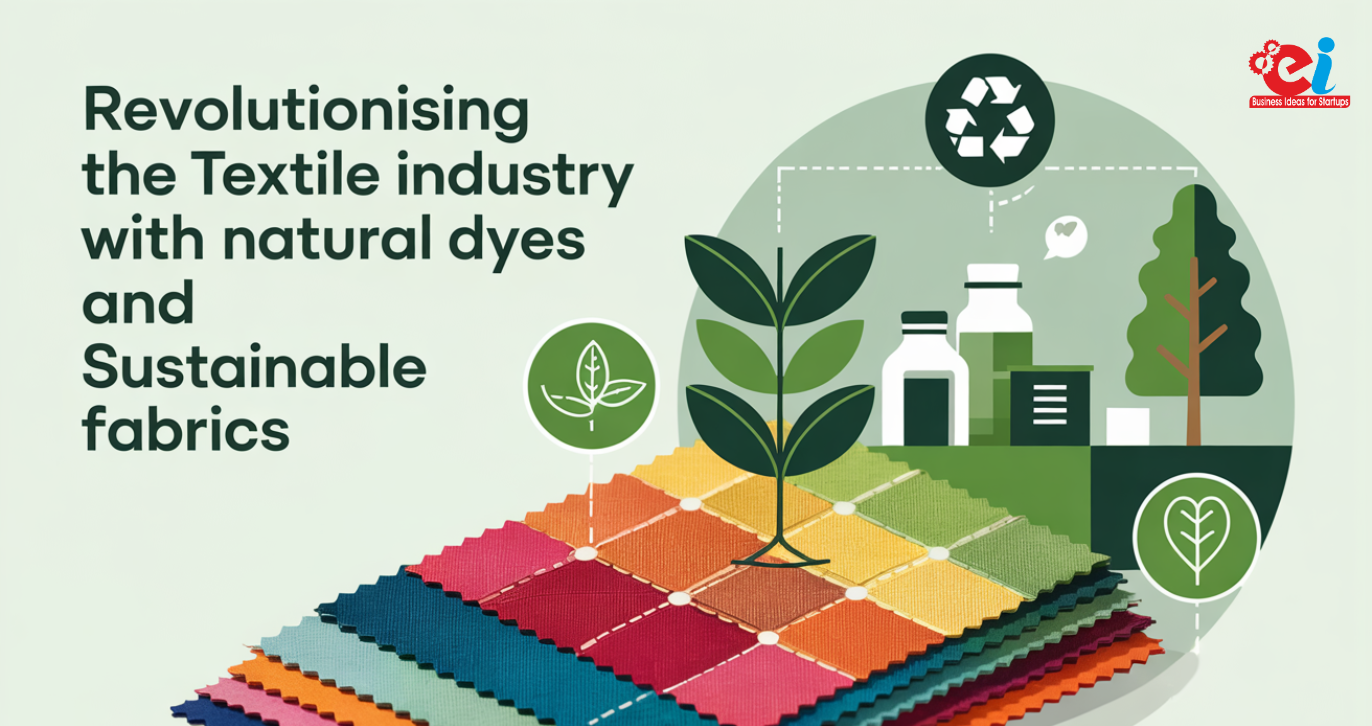The textile industry has always been synonymous with pollution and waste, even for global disasters. By the grace of God, the last few years have seen a gradual global shift toward increasing emphasis on sustainability in the textile industry, with the most apparent use of natural dyes and eco-friendly fabrics. The green revolution is not all good for consumers, besides the planet, but has piqued their interest in more healthy and ethical options.
The Synthetic Dye-and-Wear Issue in Textile Industry
For many decades, synthetic dyes and chemically treated fabrics had gloriously supported the textile industry. These materials are the source of bright and lasting hues, yet the reality is quite the opposite when one must discuss the prices.
1. Water Pollution
Huge amounts of water are consumed in dyeing with synthetic dyes, and the effluent is then drained away into rivers and lakes. Thus, such a process causes the contamination of water resources with the living organisms and local people.
2. Toxic Chemicals
The synthetic dyes are loaded with several toxic compounds within themselves, like lead and mercury, as well as formaldehyde. Such a situation has dire consequences on factory workers’ health and gives skin irritations or allergic reactions to many people.
3. Non-biodegradable
Polyester, nylon, and acrylic, for example, belong to this category of plastic-based fibers. Fibers do not decompose fast, thus forming huge heaps in segmented landfills.
The Natural-Dyes Hump Textile Industry
Dyes have been derived from plant, mineral, or insect sources, naturally, since the beginning of civilization with all possible techniques for producing textiles. Today, it stands as a testimony to the renaissance of this art since its usefulness has been admired by many as very advantageous in general.
Also read : Modern Technology of Textile Dyes & Pigments
1. Green and Compostable
These dyes are non-hazardous so that they biodegrade easily without polluting water bodies, unlike synthetic dyes.
2. Allergy Effect Nullify Against Skin
Naturally dyed cloth is safe for skin so that allergies tend to reduce and irritate less. It is also said to be non-toxic to textile workers, who have a safer environment.
3. Beautiful Shades Interiorly
Natural dye will indeed acquire very rich, earthy hues that synthetic dyes cannot even compare to these days since every batch is different from one another. Customer exclusivity will be assured, thus alluring the fashion consumer in the hunt for originality.
Sustainable Fabrics: A Step Towards Greener Fashion
Sustainable textiles, apart from natural dyes, are crucial for reducing the environmental impact of the textile industry. These textiles adopt biodegradable materials and eco-friendly processes.
1. Organic Cotton
Organic cotton production in today’s world uses none of the synthetic pesticides and fertilizers that are conventionally used in cotton farming.
2. Hemp
Durable with minimum water consumption and basically grows on its own, without having to use pesticides, hemp is that type of fabric. Naturally breathing and being biodegradable makes it an excellent utility.
3. Linen
Linen is cool and absorbent, biodegradable textile derived from flax plants. Production is much less water and chemical consuming compared to cotton.
4. Bamboo Fabric
One of the fastest-growing plants without chemicals and pesticides, so that the fabric sustainability is unquestionable. It is supple, wicking moisture, and is also a natural anti-bacterial thing.
5. Tencel (Lyocell)
Sustainability is guaranteed by making Tencel out of usually eucalyptus tree wood pulp but mostly out of sustainably available wood pulp, whereby production is made using a closed-loop process whereby solvent and water are recycled.
The Role of Ethical Brands in Fashion
Some of the fashion brands are today adopting into their collection the sustainability of using natural dyes with their eco-friendly fabrics to a green future.
1. Patagonia
Patagonia pioneered its path in sustainable fashion by wearing organic cotton, hemp, and recycled materials with clothes, which preaches ethical brands with promoting standards of fair labor.
2. Eileen Fisher
This company specializes in organic fabric, natural dyes, and circular practices to reduce waste.
3. People Tree
An early promoter of ethical fashion, it uses organic cotton and natural dyes while aiding fair trade communities.
4. Pact
It is a label that produces the most affordable line of sustainable clothing made from pure organic cotton and non-toxic dyes and gets eco-fashion into the market for the widest audience possible.
Ways to Consumer-contribute towards Sustainable Fashion
Investment in individual consumer behavior could greatly influence the speed of the transition to sustainability. The following are ways consumers may help in the effort:
1. Natural and Organic Fabrics
Choose garments woven from organic cotton, hemp, bamboo, and linen instead of the synthetic ones.
2. Look for Natural Dyes
Check clothing labels for natural dye information. Most ethical brands emphasize this point in their product descriptions.
3. Buy from Sustainable Brands
Buy from fashion brands that respect ecology, just wages, and ethical production.
4. Adopt Slow Fashion
Invest in good-quality classics instead of buying into fast-fashion trends. That curtails waste and promotes sustainable consumption.
5. Recycle and Upcycle
Donate, resell, or repurpose clothes instead of throwing them out. Upcycling gives a second life to garments, thus reducing landfill waste.
Closing Thoughts
Currently, natural dyes and sustainable fabrics have been the hottest topic in the textile industry. What eco-friendly materials, ethical brands, and slow fashion quite drastically reduce the bitter environmental side of clothing production is apparent. As the awareness grows and technology innovates, sustainable fashion will continue to mold the industry’s future to become more stylish yet responsibly forward-looking. It’s about changing ourselves: every purchase counts much toward a greener planet.
















